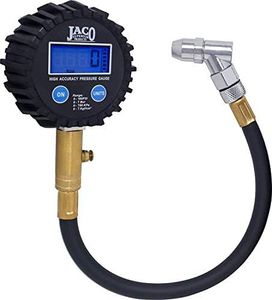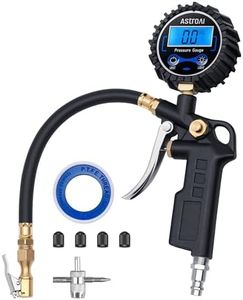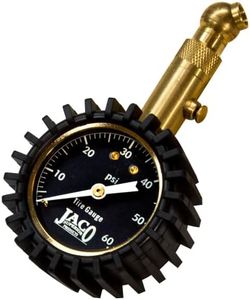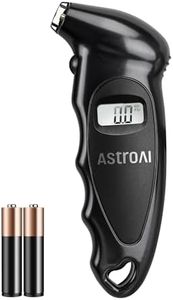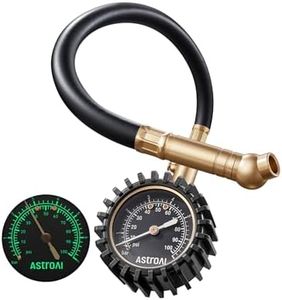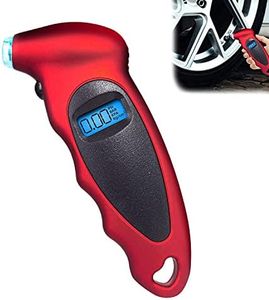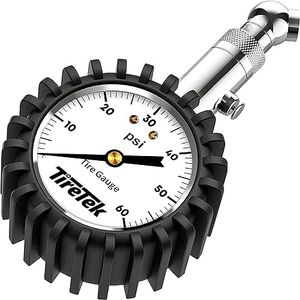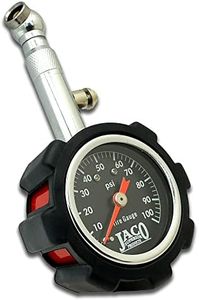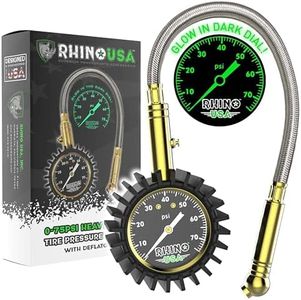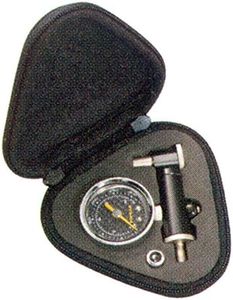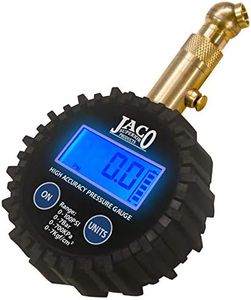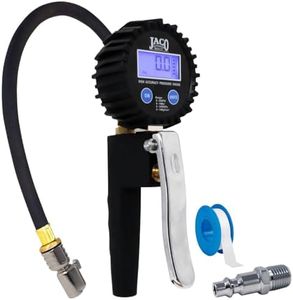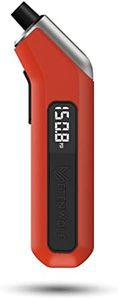We Use CookiesWe use cookies to enhance the security, performance,
functionality and for analytical and promotional activities. By continuing to browse this site you
are agreeing to our privacy policy
10 Best Tire Pressure Gauges
From leading brands and best sellers available on the web.By clicking on a link to a third party's website, log data is shared with that third party.
Buying Guide for the Best Tire Pressure Gauges
Choosing the right tire-pressure gauge is important for maintaining your vehicle’s safety, performance, and fuel efficiency. A good gauge ensures your tires have the correct pressure, which prevents uneven wear and protects you on the road. The right tire-pressure gauge for you depends on where and how often you use it, your comfort with reading different types of displays, and how portable or durable you need the tool to be. By understanding the key features of these tools, you can select one that fits your needs and helps you keep your vehicle in top shape.Type of GaugeTire-pressure gauges come in several types: analog (dial), stick (pencil), and digital. Analog gauges use a needle and dial face, which are easy to read once you’re familiar with them and are often sturdy, while stick gauges are small and basic, offering simple mechanical readings. Digital gauges have an electronic display and are usually the easiest to read, especially in low light. To pick the right one, consider how comfortable you are with reading numbers, whether you need backlighting, and if you prefer a compact or a more robust tool. If you want quick, precise readings, digital might suit you best, but if you prefer no batteries and ultra-portability, a stick or analog gauge could be better.
Pressure RangeThe pressure range refers to the minimum and maximum pressures the gauge can measure, often stated in pounds per square inch (PSI) or bar. For most passenger cars, a pressure range of 0–60 PSI is sufficient, while trucks or bicycles might need a higher or lower range. Choosing a gauge with a range that matches your vehicle’s tire needs ensures accurate readings. If you use it mainly for standard vehicles, a lower range is more precise, but if you service high-pressure tires, look for a broader range.
AccuracyGauge accuracy means how close the reading is to your tire’s actual pressure. Accurate readings are essential for correct inflation and safety. Accuracy is often noted as a percentage, like ±1% of the reading. Higher accuracy is better for precision, but can also mean the tool is a bit more costly or delicate. If you just want to keep your tires in good shape, typical gauges are usually accurate enough, but if you’re a performance driver or are managing specialized tires, consider a model with higher accuracy.
Display VisibilityThis refers to how easily you can see and understand the reading. Digital displays are often backlit and large, which helps in dim or nighttime situations. Analog dials should have clear, contrasting markings, and stick gauges can be a bit harder to read due to their sliding bar design. If you check your tires in low light or want something very quick to read, look for a clear digital or high-contrast analog display.
Durability and Build QualityDurability means how well a gauge resists drops, dust, water, and general wear. Gauges made from metal or tough plastics can better withstand rough use in a garage or glovebox. If you’ll be keeping your gauge in a toolbox or using it on the go, consider choosing one built with sturdy materials, maybe even with added rubber protection or a storage case.
Ease of UseEase of use covers how simple it is to attach the gauge to your tire valve and get a clear readout. Some gauges have swiveling or angled heads, making it easier to reach the tire valve regardless of wheel design. Others click firmly into place and won’t leak air during use. If you have trouble accessing your tire valves or want to check tires quickly, choose a design with a comfortable grip and user-friendly features.
